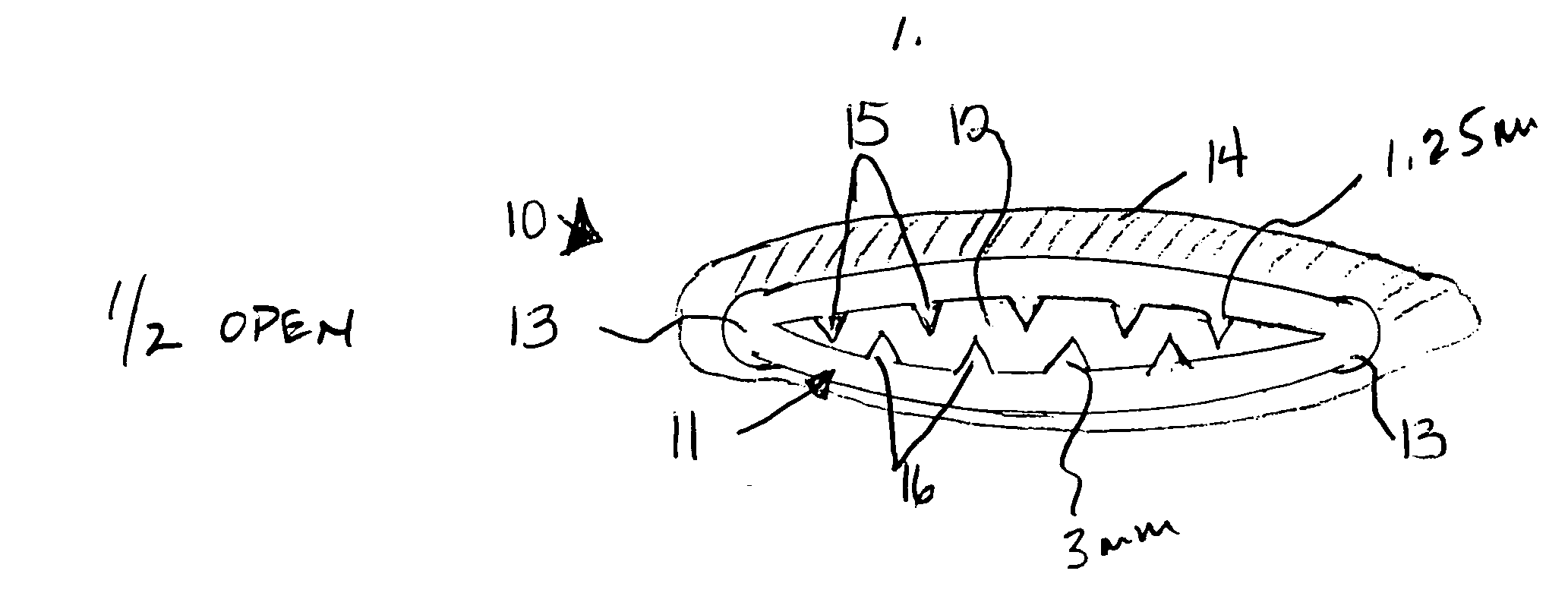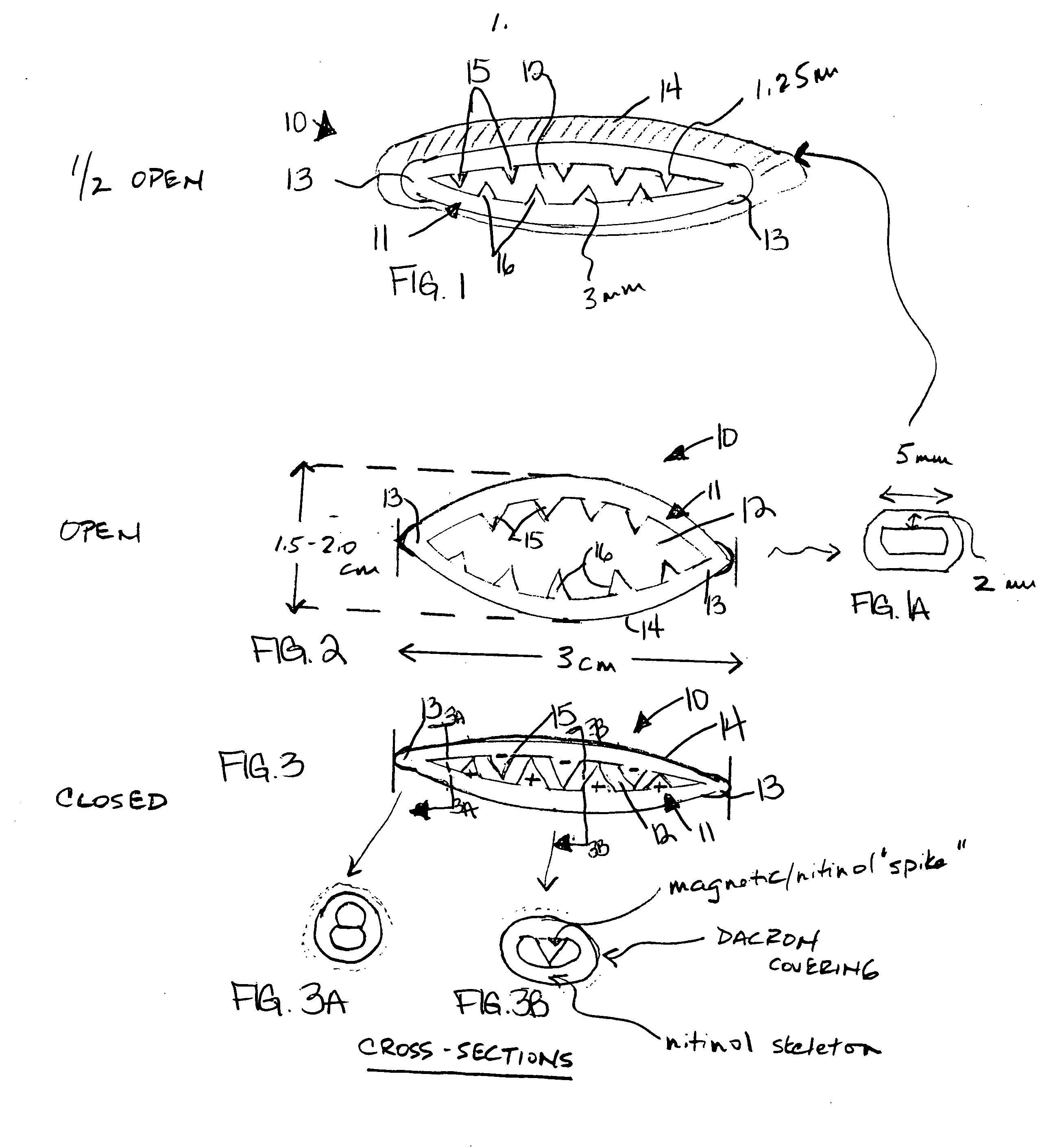Atrial tissue fixation device
- Summary
- Abstract
- Description
- Claims
- Application Information
AI Technical Summary
Benefits of technology
Problems solved by technology
Method used
Image
Examples
Embodiment Construction
[0027] A magnetic atrial appendage fixation device 10 is shown in FIGS. 1-3 as having a body 11 with an elliptical cross section preferably made of nitinol material. The body 11 has a central through opening or cavity 12 and rounded ends 13. An external surface of the body 11 is preferably covered with a Dacron® cloth 14. An internal surface of the body 11 defining the opening 12 has a plurality of opposed magnetized spikes, teeth, or graduated serrations 15, 16 that apply sufficient force to permanently occlude the orifice 21 of the left atrial appendage 20 (see FIGS. 7 and 8). As shown in FIG. 3, the upper serrations 15 are of negative polarity and the lower serrations 16 are of positive polarity. However, the polarities can be reversed. Since nitinol material is nonferromagnetic, the serrations 15, 16 are formed of a ferromagnetic material and are attached to the body 11 by any suitable means such as bonding using medical grade epoxies and adhesives.
[0028] The magnetic atrial ap...
PUM
 Login to View More
Login to View More Abstract
Description
Claims
Application Information
 Login to View More
Login to View More - R&D
- Intellectual Property
- Life Sciences
- Materials
- Tech Scout
- Unparalleled Data Quality
- Higher Quality Content
- 60% Fewer Hallucinations
Browse by: Latest US Patents, China's latest patents, Technical Efficacy Thesaurus, Application Domain, Technology Topic, Popular Technical Reports.
© 2025 PatSnap. All rights reserved.Legal|Privacy policy|Modern Slavery Act Transparency Statement|Sitemap|About US| Contact US: help@patsnap.com



